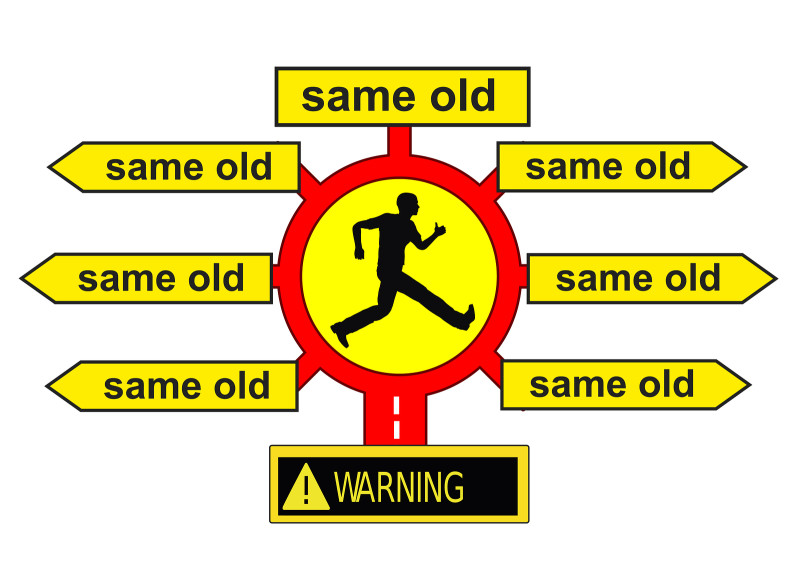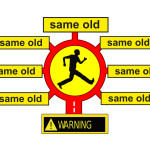
A change management programme succeeds only when the change in processes and outcomes become embedded in day-to-day business. Embedding change in day-to-day business, requires a critical mass of employees and managers to be emotionally tied to the change in business outcomes and the change in processes which deliver the change in outcomes.
What does it mean to be emotionally tied?
The old metaphor of the chicken and the pig demonstrating the difference between commitment (emotional attachment) and involvement suffices to explain.
The metaphor goes, “What’s the difference between commitment and involvement?”
“Ask whether the contribution of a pig and a chicken to a breakfast of bacon and eggs is commitment or involvement.” The answer is, “The chicken is involved, the pig is committed.”
When a critical mass of people shows the commitment of the pig, you will have succeed in embedding change into day-to-day life.
When too many people are, at best, demonstrating the involvement of the chicken, a change management programme is doomed to stop as soon as the driving force behind it is removed.
What ties people emotionally to a change programme? “What’s In It For Me?” (WIIFM), is the answer. Whilst a few people may be altruistic about change, the major motivator is WIIFM.
Whilst the elements of a change programme that provides sufficient incentive for people to become committed rather than just involved is different from person to person, the elements tend to be the same, programme to programme.
Career advancement/remuneration:
Career advancement is a strong incentive to most people. It appears as the first or second item in the list of work motivators in most studies. When it is second, the prime element is usually money. Career advancement, usually a driver of future income, is therefore either the first element, or a strong driver of the first element, in most surveys.
Personal pride in a job well done:
Career advancement comes from demonstrated personal development. That is, development of the behaviour, skills and knowledge to execute one’s tasks well. Being able to do a job well consistently leads to pride in a job well done, another strong motivator.
Recognition:
Thanks for that job well done from colleagues, customers and supervisors cements the perception, creating a sense of pride.
If the sense of pride and the competence to execute a job well is prevalent, people will be recognised and their career opportunities will unfold in front of them.
Standards of performance:
Providing new standards of performance that are known by all is a first step in creating clarity about what changes are required. Standards of performance additionally make it clearer what behaviour, skills and knowledge are required to execute a job well.
Low tolerance for non-performance:
It is insufficient, however, to develop and communicate standards of performance. An important step is the establishment of obvious low tolerance by supervisors and managers for below standard performance. Another important step is to train people to improve their behaviour, skills and knowledge.
Coaching, training and counselling people when their performance or behaviour does not meet clearly communicated standards, is a must in executing a change management plan. It drives the realisation that this is serious. Further, it becomes clear what behaviour, skills and knowledge are required to do a good job.
Low tolerance for non-performance is a key element to build critical mass.
Building trust:
Even when the WIIFM’s are established and the processes for people to gain an advantage out of the change programme are clear, the change programme may still fall over if trust has not been developed between the proponents of the change programme and those being affected.
Building trust by communicating early and often, establishing standards of performance as part of the change programme, training, coaching and counselling people to enable them to execute to the standards of performance and setting a low tolerance level for non-performance will build pride in a job well done, leading to career advancement.
This approach has built self sustaining momentum in a change programme every time I have used it. Many organisations think they do it when instituting change. However, most organisations do not. Most change programmes fail the longevity test.






